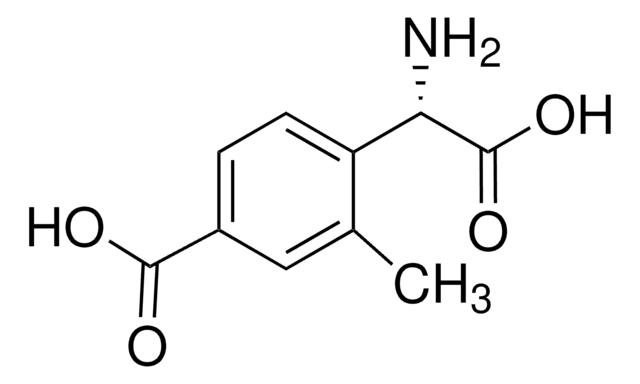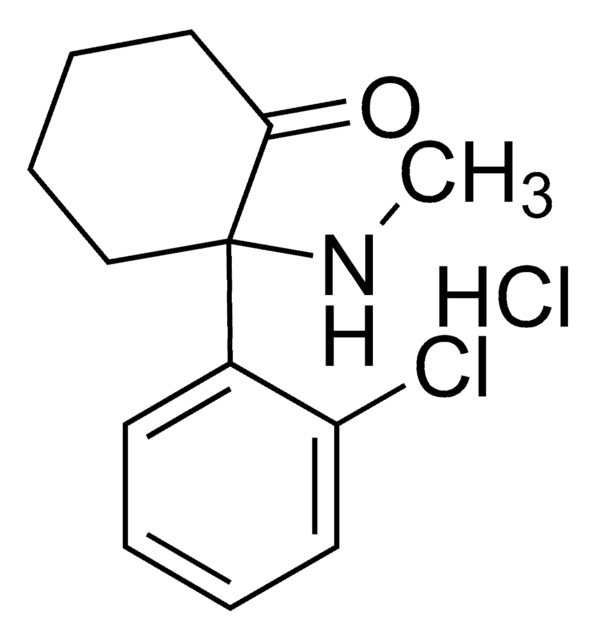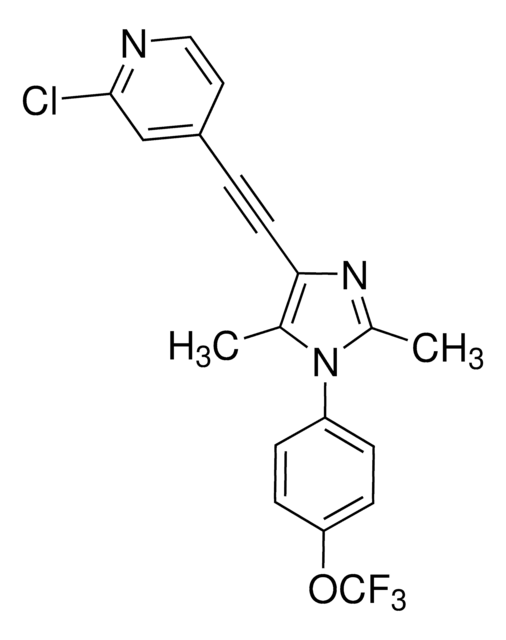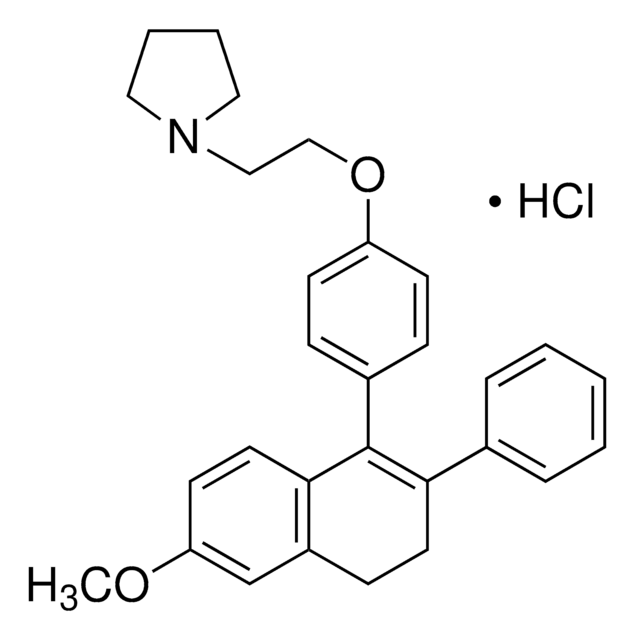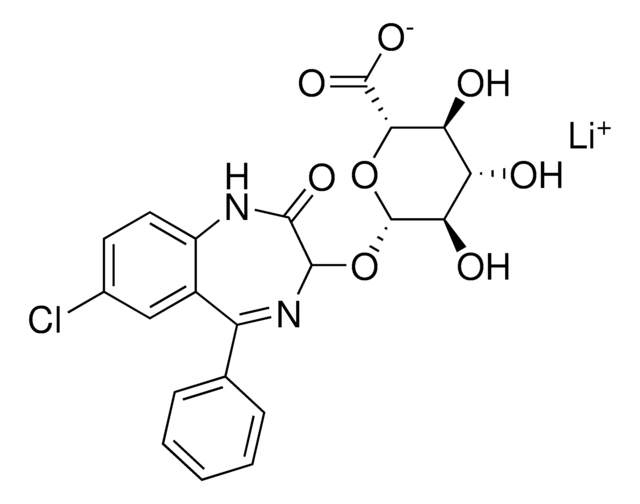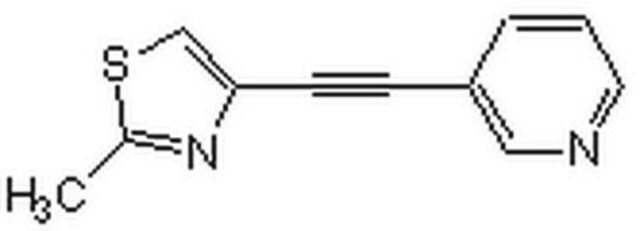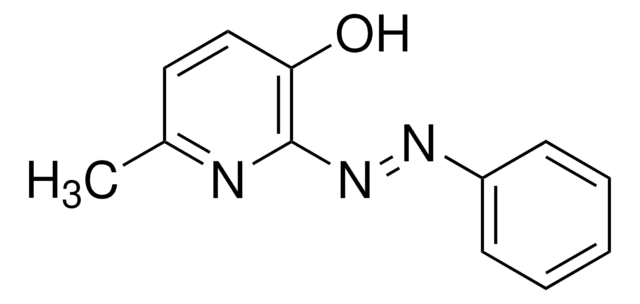M5435
6-Methyl-2-(phenylethynyl)pyridine hydrochloride
≥98% (HPLC)
Synonym(s):
MPEP hydrochloride
Sign Into View Organizational & Contract Pricing
All Photos(1)
About This Item
Empirical Formula (Hill Notation):
C14H11N · HCl
CAS Number:
Molecular Weight:
229.70
MDL number:
UNSPSC Code:
12352200
PubChem Substance ID:
NACRES:
NA.77
Recommended Products
Assay
≥98% (HPLC)
form
powder
color
off-white to light tan
solubility
DMSO: 10 mg/mL, clear
storage temp.
room temp
SMILES string
Cl.Cc1cccc(n1)C#Cc2ccccc2
InChI
1S/C14H11N.ClH/c1-12-6-5-9-14(15-12)11-10-13-7-3-2-4-8-13;/h2-9H,1H3;1H
InChI key
PKDHDJBNEKXCBI-UHFFFAOYSA-N
Gene Information
human ... GRIN2B(2904) , GRM5(2915)
rat ... Grm5(24418)
General description
GRIN2B (glutamate ionotropic receptor NMDA type subunit 2B) codes for N-methyl d-aspartate receptor subtype 2B (GluN2B). It belongs to the N-methyl-D-aspartate receptor (NMDAR) gene family. It is located on chromosome 12p13.1.
Application
6-Methyl-2-(phenylethynyl)pyridine hydrochloride has been used to investigate whether 3, 4 (±) methylenedioxymethamphetamine (MDMA) could influence self-renewal via the mGlu5 receptor in mouse embryonic stem cells (mESCs).
Biochem/physiol Actions
GRIN2B (glutamate ionotropic receptor NMDA type subunit 2B) plays an important role in the growth of neurons and is highly essential for learning and memory. GRIN2B mutation is associated with neuropsychiatric and developmental disorders like schizophrenia, Parkinson′s disease and bipolar disorder. MPEP (2-methyl-6-(phenylethynyl)pyridine hydrochloride) is used to treat Alzheimer′s disease (AD).
Highly selective, non-competitive mGluR5 metabotropic glutamate receptor antagonist.
Features and Benefits
This compound is a featured product for Neuroscience research. Click here to discover more featured Neuroscience products. Learn more about bioactive small molecules for other areas of research at sigma.com/discover-bsm.
This compound is featured on the Glutamate Receptors (G Protein Family) page of the Handbook of Receptor Classification and Signal Transduction. To browse other handbook pages, click here.
Storage Class Code
11 - Combustible Solids
WGK
WGK 3
Flash Point(F)
Not applicable
Flash Point(C)
Not applicable
Personal Protective Equipment
dust mask type N95 (US), Eyeshields, Gloves
Choose from one of the most recent versions:
Already Own This Product?
Find documentation for the products that you have recently purchased in the Document Library.
Customers Also Viewed
José Luis Albasanz et al.
ACS chemical neuroscience, 7(12), 1690-1697 (2016-09-17)
Due to phylogenetic proximity to the human, zebrafish has been recognized as a reliable model to study Alzheimer's disease (AD) and other central nervous system disorders. Furthermore, metabotropic glutamate receptors have been previously reported to be impaired in brain from
Human GRIN2B variants in neurodevelopmental disorders
Hu C, et al.
Journal of Pharmacological Sciences, 132(2), 115-121 (2016)
Li Rebekah Feng et al.
Translational psychiatry, 8(1), 110-110 (2018-06-01)
Cancer-related fatigue (CRF) is a common burden in cancer patients and little is known about its underlying mechanism. The primary aim of this study was to identify gene signatures predictive of post-radiotherapy fatigue in prostate cancer patients. We employed Fisher
Geehoon Chung et al.
Scientific reports, 7(1), 9743-9743 (2017-08-31)
Patients with chronic pain easily accompany the negative mood symptoms such as depression and anxiety, and these disturbances in turn affect the aversive perception of pain. However, the underlying mechanisms are largely unknown. We hypothesized that the alteration of metabotropic
Mélanie Cavalier et al.
Neurochemical research, 44(3), 609-616 (2018-01-22)
Maternal immune challenge has proved to induce moderate to severe behavioral disabilities in the offspring. Cognitive/behavioral deficits are supported by changes in synaptic plasticity in different brain areas. We have reported previously that prenatal exposure to bacterial LPS could induce
Our team of scientists has experience in all areas of research including Life Science, Material Science, Chemical Synthesis, Chromatography, Analytical and many others.
Contact Technical Service